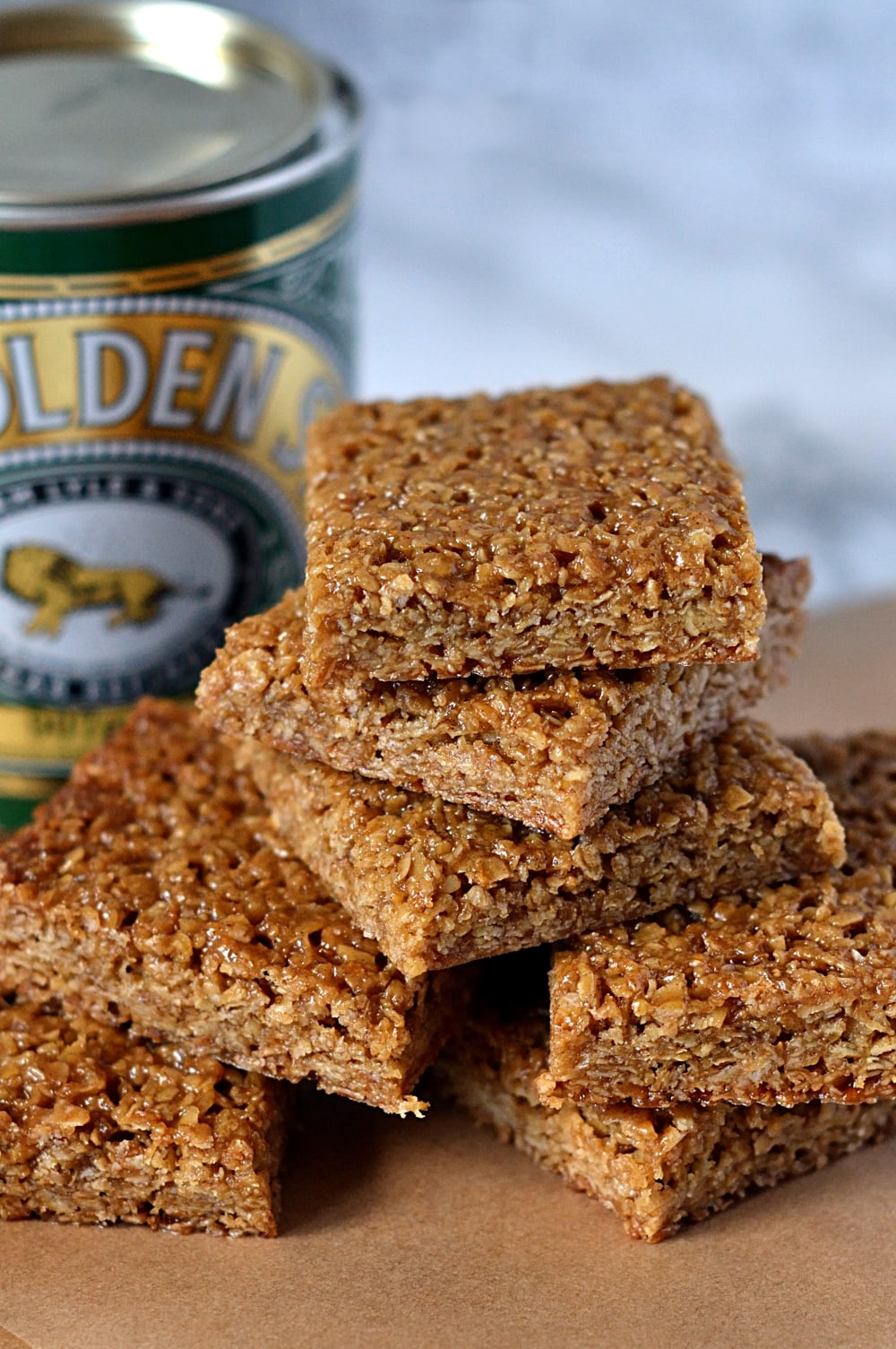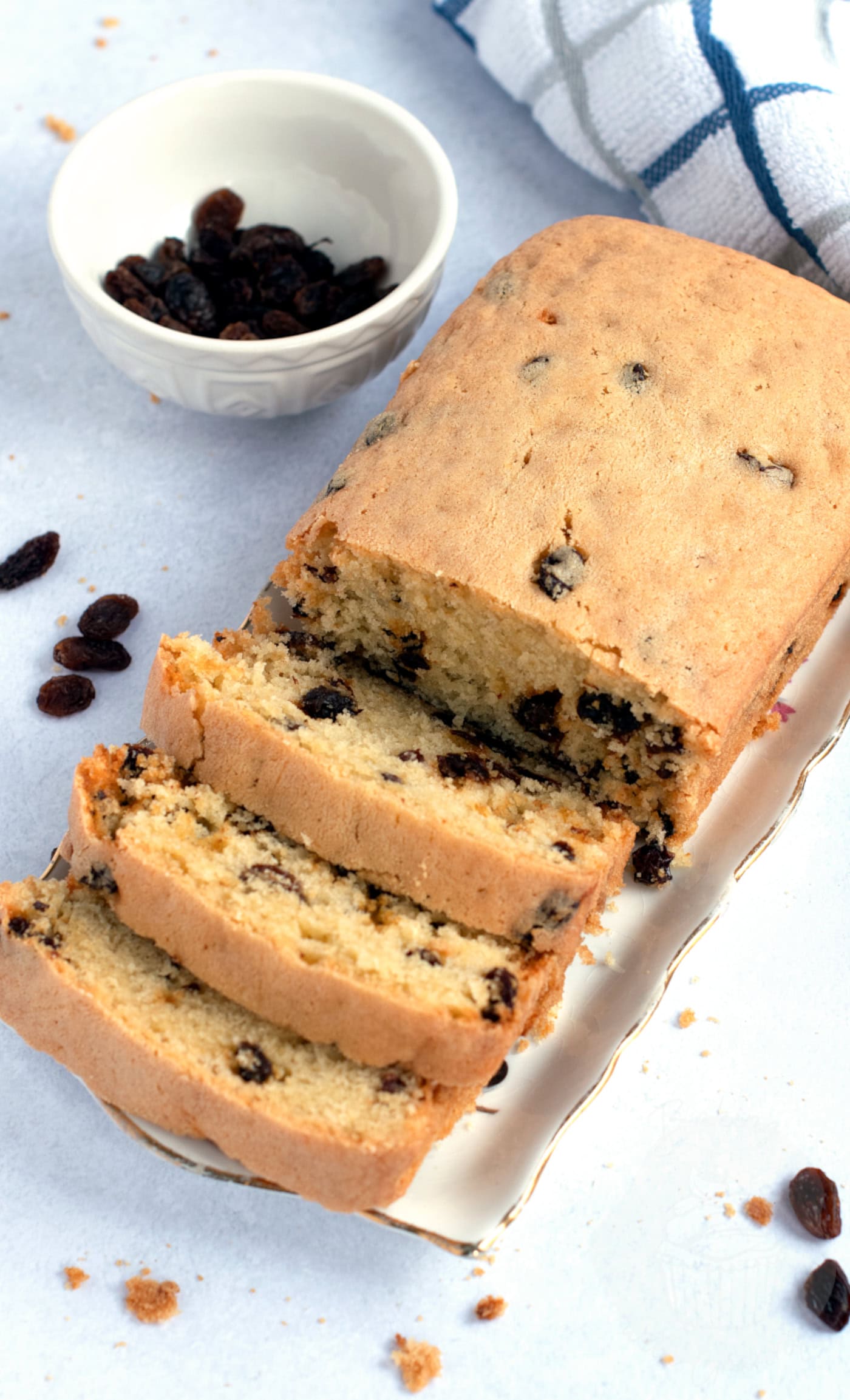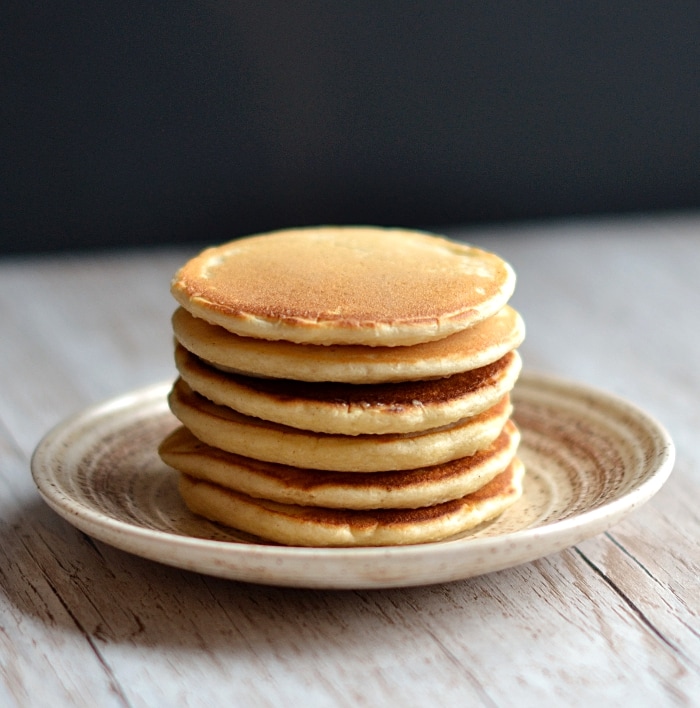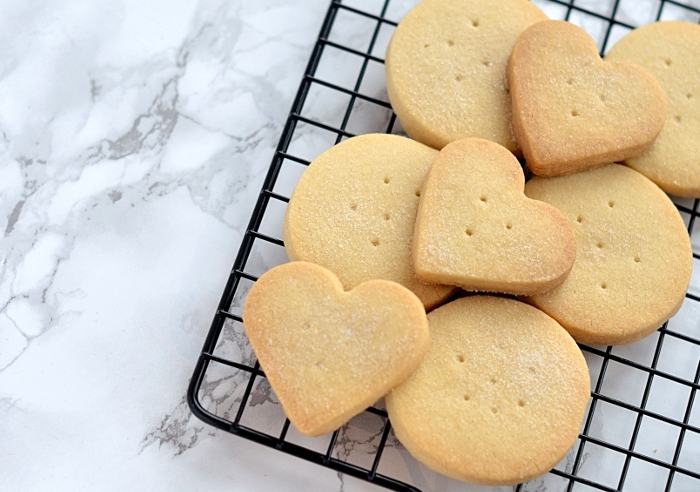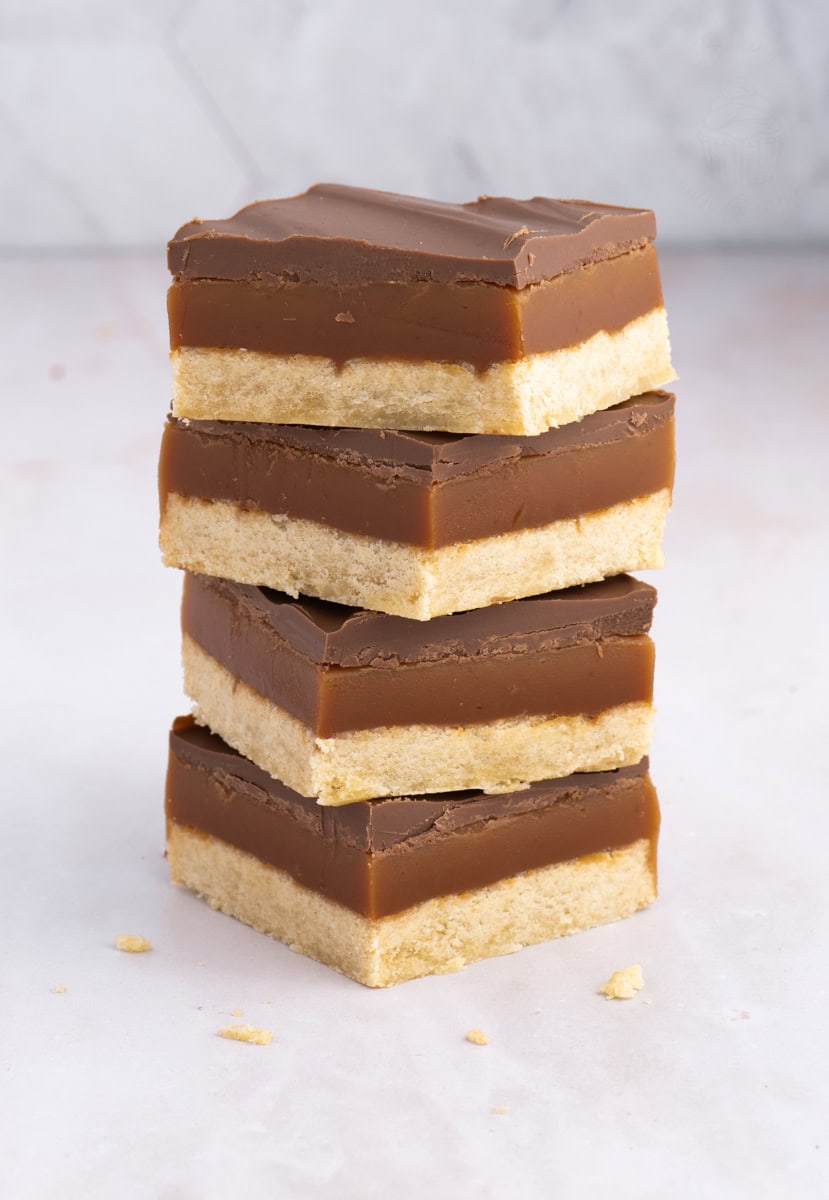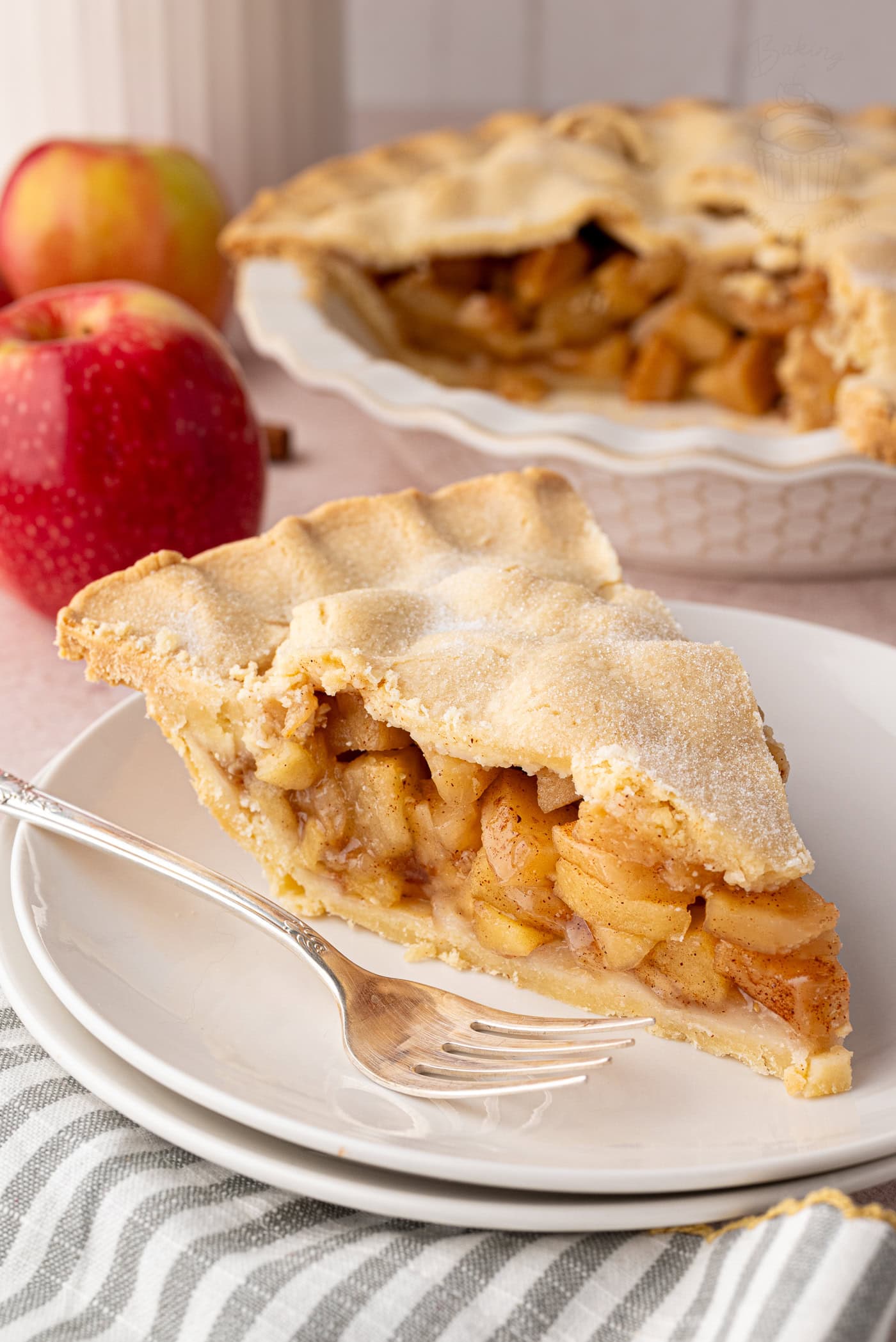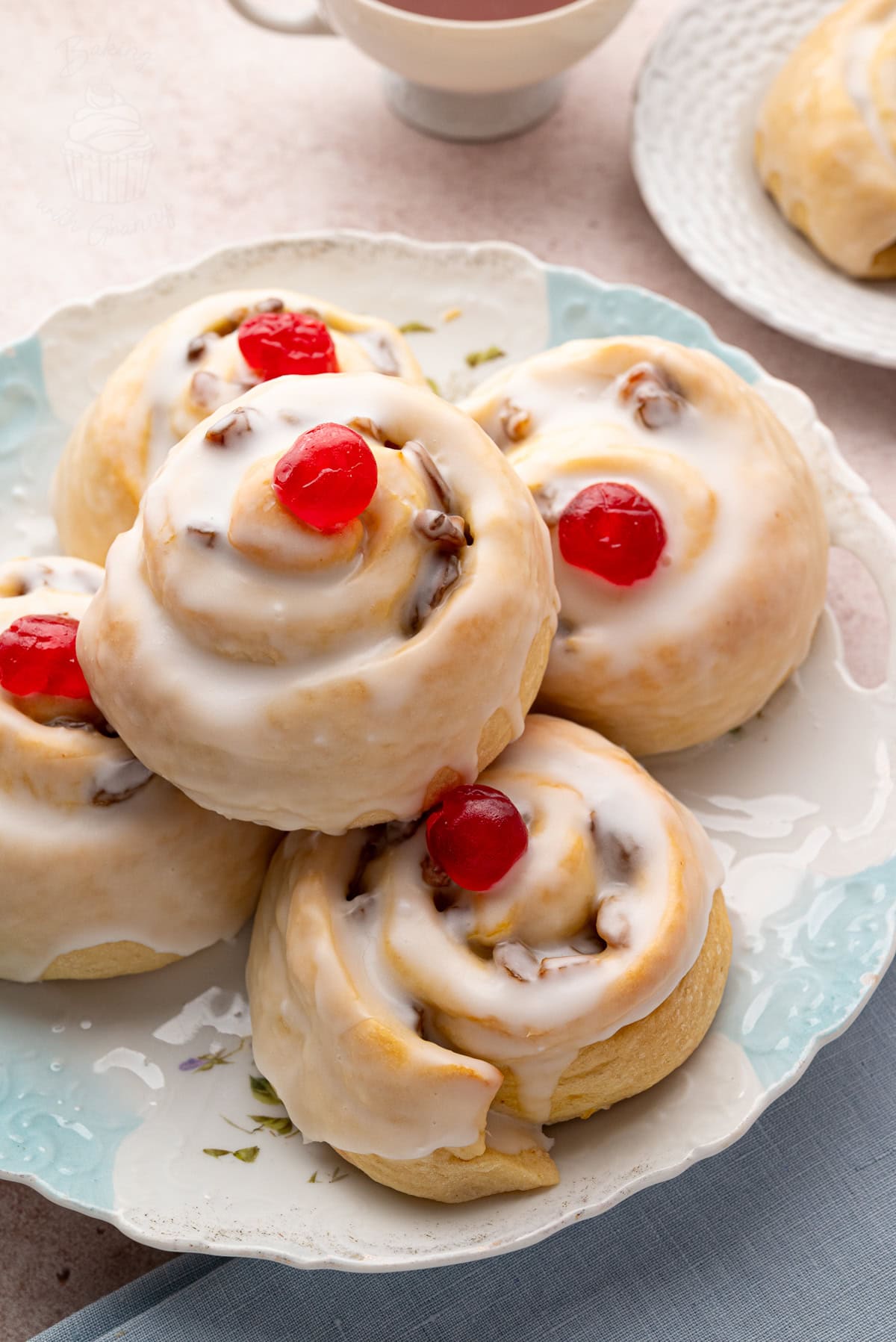Doughy little buns, stuffed full of delicious custard, before being rolled in a generous coating of sugar. Custard doughnuts are the top tier sweet treat.

When it comes to doughnuts, particularly of the filled variety, custard will always be my preference.
Don’t get me wrong, I do love a Jam Donut too – the flavour options you can get with them is truly endless. But when a choice of filled doughnuts are presented to me, custard always comes out top.

How do you make Custard Donuts?
To make freshly baked custard donuts, you start with your dough. The dough is a rich yeast dough, made with milk, egg, butter, sugar, flour and yeast. You combine the ingredients, give them a good knead, then let the dough rest for a while.
Once risen, you knock the dough back, before shaping into your individual doughnut balls.
Another rise to get them nice and puffy, then your fry them too golden perfection.
A little cooling time, then you can fill them with your custard of choice, before rolling in some excess sugar to finish.
Are Custard Donuts easy to make?
There are a few steps to making custard doughnuts but none of those are particularly complex. The dough is the most time-consuming part of making fresh donuts, but that is due to the kneading and time taken to prove and rise your dough; it’s not that it is particularly difficult.
Again, the cooking of donuts is fairly simple, although caution is required as it involves drying them in very hot oil.
The most fiddly part of making fresh filled donuts is in the actual filling step. And that is more messy & trial-and-error, than it being particularly difficult.

Ingredients:
Milk
As donuts use a rich dough, you will need a little milk, butter/margarine, sugar and egg. Full-fat milk is preferable but it’s entirely up to you what kind you use. Dairy and soya are both good choices that I have had success with.
Butter or Block Margarine
Butter will give the richest flavour to your donuts but margarine is actually what is used in most store-bought donuts, purely due to it being a cheaper ingredient. If using margarine, just be sure to opt for a block margarine, as opposed to a soft spread.
Strong Plain Flour
Like many yeast-dough recipes, these jam donuts call for a strong flour. Strong flours give a slightly higher concentrate of gluten, meaning they bake with a stronger structure, which is perfect for catching the gas bubbles created from the yeast. A little bit of science in baking!
A regular plain flour can be used in a pinch but you will need to knead it a lot more, to help make the most of the lesser amount of gluten.
Caster Sugar
Again, with a rich dough a little bit of sugar is a must. And donuts are a sweet treat, so let’s make that dough extra indulgent! Caster sugar is preferable, as it’s finer texture mixes well with the other ingredients.
Instant Yeast
There was a time when you could buy various types of yeast but nowadays, Instant Yeast is the most accessible. It also works brilliantly in many recipes but especially in Custard Donuts, as no extra measuring or preparation is required to activate it.
Free-range Egg
An egg adds the final bit of richness you want in a squidgy little donut. The size of the egg is not crucial, just be sure to use free-range.
Custard
When it comes to filling a custard doughnut, you of course need some custard! There’s a few ways to approach this… You can of course make your own custard from scratch, using eggs, milk and sugar. Alternatively, you can cheat a little and use a custard powder and make your custard this way. Or you can take my preferred route and use a ready-made custard! This can be “fresh” custard from the fridge at the supermarket, or simply a good old fashioned tin of custard.

Granny's Top Tips
• For evenly sized donuts, weigh your dough after knocking it back post-first-rise (step 5), then divide that number by twelve. Then weigh out each donut to that number, before rolling them into their balls.
• In the recipe, it suggests placing your dough-balls onto individual squares of greaseproof paper. This is a game changer!! You will then be able to move your donuts from tray/board to fryer with ease, and without compromising the structure of the now-perfectly risen dough.
• If you don’t already have a sugar thermometer, I highly recommend investing in one. This will allow you to closely monitor your oil temperature and ensure success whilst frying your donuts. Plus you can then use it to make our Scottish Tablet too!
• You can of course use a deep-fat fryer, if you have one.
• Using chop sticks to flip your donuts during frying is by far the easiest technique I have found.
• I cannot stress this enough… When working with hot oil, please please please be extremely careful. It is also worth having an awareness on how to deal with an oil fire before you start.

Love this? Try this:

Custard Donuts
INGREDIENTS
- 120 ml Milk
- 60 g Butter or Block Margarine
- 275 g Strong Plain Flour (Bread Flour)
- 40 g Caster Sugar (Superfine Sugar)
- 7 g Easy Bake Yeast usually 1 sachet
- 1 Free-range Egg at room temperature, beaten
- 1 litre Oil vegetable, sunflower, rapeseed...
- 100 g Custard
INSTRUCTIONS
- In a small saucepan, add the milk and butter/margarine. Warm over a low heat, until the butter/margarine starts to melt. Remove from the heat and allow to cool a little - you don't want it to be too hot before adding the other ingredients.
- In a large bowl, sift the flour and sugar. Add the yeast and gently mix to combine. Make a well in the middle of the dry ingredients then add the milk mixture and egg. Mix together to create a soft, slightly sticky dough - you may need to use your hands!
- Once the dough has come together, tip it onto a well floured surface and begin to knead with floured hands, adding more flour as needed. Knead for around 10 minutes, until you have a smooth, stretchy dough.
- Place the dough into a oiled bowl (to prevent it from sticking) and cover with an oiled piece of cling film, or a damp tea towel. Leave to rise in a draught-free location for about an hour, or until it has doubled in size.
- Once the dough has risen, knock it back and briefly knead it on a lightly floured surface. Divide your dough into 12 even sized balls, rolling them between your hands to shape them. Place your dough balls onto individual squares of greaseproof paper (approx. 10cm² in size) with a bit of space between them - preferably on a tray or board - and cover again with a piece of oiled cling film or a damp tea towel. Leave in a draught-free place for about an hour, until they have puffed up to about double their size.
- In a large pan, heat your oil to 180°c/350°F (use a thermometer for accuracy). You want your oil to be deep enough for your doughnuts to comfortably fry, without sticking to the bottom. Depending on your pan size, you may need to use more/less oil.
- Using the greaseproof paper square, lift your doughnut to the oil, and gently drop it in, exercising extreme caution. Allow the donut to fry for about 90 seconds before flipping it over, allowing the underside to fry for about 90 seconds. Depending on the size of your pan, you should be able to fry the donuts in small batches; just be careful not to overcrowd your pan or you risk the doughnuts sticking together and the oil dropping in temperature too quickly.
- Once your doughnuts are golden brown on both sides, use a slotted spoon to remove them, holding them above the oil for about 10 seconds (to allow the oil to drip sufficiently) before transferring to a wire rack to cool. Continue until all your doughnuts are cooked, whilst continuing to monitor your oil temperature and adjusting the heat as needed.
- Spoon your custard into a piping bag with a large circular nozzle. Once your doughnuts are cool enough to touch, poke a little hole with the end of a wooden spoon to the side of each doughnut, before piping your custard into the hole. It can be a bit of trial and error (and personal preference) getting the right amount of custard in each donut, but around a teaspoonful amount is usually ideal.
- Roll the doughnuts in some extra caster sugar to finish.
IMPORTANT NOTE:
All my recipes are developed using a digital scale and the metric system (grams and millilitres). Cup measurements are available as a conversion but these, unfortunately, won't always be as accurate. For best results, I always recommend baking with a digital scale.
RECIPE NOTES:
Free-from & Vegan
Dairy-free: You can easily make these dairy-free custard doughnuts by using a dairy-free margarine, a dairy-free milk of your choice (my preference is sweetened soya milk) and a dairy-free custard.
Nut-free: This donut recipe doesn’t use any nut ingredients but be sure to double check the allergens on each of your individual ingredients.








